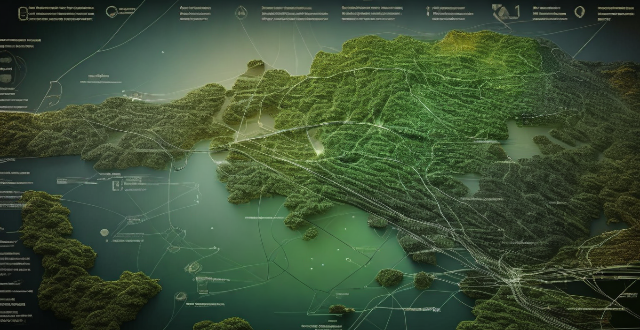Urban green spaces play a crucial role in climate adaptation strategies by providing cooling effects, carbon sequestration, flood control, and habitat preservation. To effectively incorporate these spaces into climate adaptation efforts, city planners should conduct assessments, develop comprehensive plans, collaborate with local communities, monitor and evaluate projects, and educate residents about the benefits of green spaces.

The Role of Urban Green Spaces in Climate Adaptation Strategies
Introduction
Urban green spaces, including parks, gardens, and other vegetation-rich areas, play a crucial role in climate adaptation strategies. These spaces provide numerous benefits that help cities adapt to the impacts of climate change. In this answer, we will explore the various ways inwhich urban green spaces contribute to climate adaptation.
Benefits of Urban Green Spaces
Cooling Effects
One of the most significant benefits of urban green spaces is their ability to reduce temperatures in cities. Vegetation absorbs solar radiation and releases water vapor through a process called transpiration, which helps to cool the surrounding air. This cooling effect can help mitigate the urban heat island effect, where cities are warmer than their rural surroundings due to human activity.
Carbon Sequestration
Urban green spaces also play a vital role in carbon sequestration. Trees and plants absorb carbon dioxide from the atmosphere during photosynthesis, storing it in their biomass. By increasing the amount of vegetation in cities, we can reduce the concentration of greenhouse gases in the atmosphere, contributing to climate adaptation efforts.
Flood Control
Green spaces such as parks and wetlands can help manage stormwater runoff by acting as natural sponges. These areas absorb and store rainwater, reducing the risk of flooding in urban areas. This is particularly important as climate change is expected to increase the frequency and intensity of extreme weather events like heavy rainfall.
Habitat Preservation
Urban green spaces provide habitats for a wide range of plant and animal species. By preserving these habitats, we can maintain biodiversity within cities, which is essential for ecosystem resilience in the face of climate change. Additionally, green spaces offer opportunities for people to connect with nature, promoting environmental awareness and encouraging sustainable behaviors.
Implementing Urban Green Spaces in Climate Adaptation Strategies
To effectively incorporate urban green spaces into climate adaptation strategies, city planners should consider the following steps:
1. Assessment: Conduct an assessment of existing green spaces and identify areas where new ones can be created or expanded.
2. Planning: Develop a comprehensive plan that includes goals, objectives, and timelines for implementing urban green spaces as part of climate adaptation efforts.
3. Collaboration: Work with local communities, organizations, and stakeholders to ensure that the needs and interests of all parties are considered when developing and implementing green space initiatives.
4. Monitoring and Evaluation: Regularly monitor the progress of green space projects and evaluate their effectiveness in achieving climate adaptation goals. Use this information to inform future planning and decision-making processes.
5. Education and Outreach: Educate residents about the benefits of urban green spaces and encourage them to participate in maintaining and improving these areas. This can help build community support for climate adaptation initiatives and promote long-term sustainability.